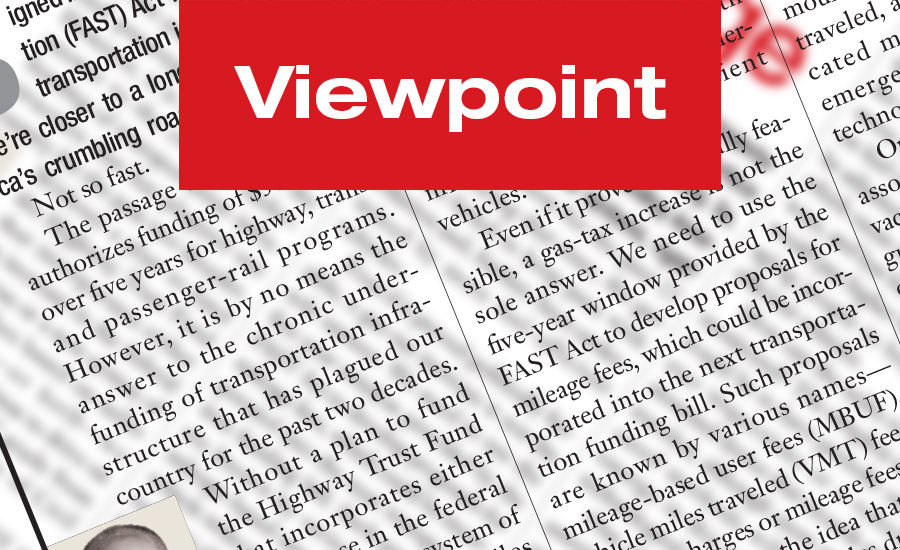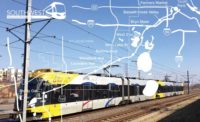Viewpoint: Overlooked Connection

 |
| John D. Porcari |
Get in your self-driving car, punch in your destination, and then check your email, surf the web or take a nap. When you arrive, you can step out and send the car to park itself. For many people, this scenario has captured the imagination. There are already driverless vehicle prototypes on the road, and major automakers predict they will be widely available by the early 2020s as a safe and more efficient driving alternative.
But this vision of self-driving vehicles obscures the need for new technologies that will allow them to communicate with each other, the roadway itself and pedestrians. We need to focus even more urgently on connected vehicle technology and potential threats to its ongoing development.
This technology now relies on a common communications platform, a variant of Wi-Fi known as dedicated short-range communication, which is licensed by the Federal Communications Commission. Unlike connected vehicles, the autonomous vehicle prototypes on roads today rely on a variety of sensors—such as LiDAR, radar and vision sensors—to “see” their surroundings, including the roadway, stops signs, traffic signals and other vehicles. Essentially, the vehicle’s sensors replicate what the human eye does—with a high degree of precision but with the same potential fallibility.
Vehicle-to-vehicle technology is not subject to visibility constraints, but LiDAR, radar and vision sensors can be obscured by inclement weather and obstacles. In the recent Tesla tragedy in Florida, the autonomous vehicle reportedly did not “see” a truck crossing its path. While it is impossible to know everything about this particular accident, it is clear that connected vehicle systems could have, at a minimum, potentially helped to avoid the crash.
Despite this technology’s potential to reduce crashes and improve safety, pressures to deliver self-driving vehicles to the market quickly are driving both traditional automakers and technology firms to develop autonomous vehicle prototypes that do not rely on connected vehicle technology. This approach will only thwart its development and, undoubtedly, make the environment for self-driving vehicles less safe. In short, we need both automation and connectivity.
The most critical issue is the potential loss of the 5.9-GHz, dedicated short-range communication radio spectrum that now enables vehicles to “talk” to each other, the surrounding infrastructure, and pedestrians and cyclists. It is now available exclusively for connected vehicle applications. But the telecommunications industry is pressing the FCC either to reallocate or share this highly valuable radio-frequency slot for commercial use by cellular and cable providers.
Requiring connected vehicle technology to share this spectrum could result in congestion that, potentially, would disrupt safetycritical vehicle communications. To lose exclusive use of the spectrum most likely would require the technology to rely on profit-driven private-carrier services, such as cellular or Wi-Fi, which are not yet technically proven for this use. Either scenario could severely undermine connected vehicle technology by forcing it to adopt a for-fee model that would allow vehicles to connect only if a service fee is paid.
In late 2016, the National Highway Traffic Safety Administration issued a draft rule that requires automakers to include vehicle-to-vehicle technology in all new light-duty vehicles. This proposed rule counters arguments by the telecommunications industry that the 5.9-GHz spectrum is underused. We urge the agency to adopt the proposed rule and welcome guidance from the Federal Highway Administration on vehicle-to-infrastructure communications. Further, the FCC, which has final say on the spectrum allocation, must either protect it or develop a plan to share it.
Connected vehicle technology must remain viable to fulfill the promise of making our roadways safer for all users—traditional vehicles as well as connected and driverless vehicles. We must act now to preserve radio spectrum space to ensure the safety benefits are available to all roadway users.
If you have an idea for a column, please contact Viewpoint Editor Richard Korman at richard.korman@construction.com.

